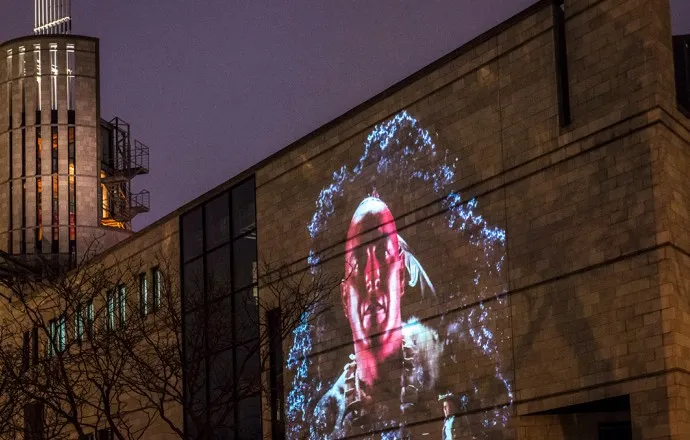“Cité Mémoire” is a digital multimedia installation illustrating the moments that have shaped Montreal’s last 400 years.
Cité Mémoire
When the sun goes down on the streets of Montreal, the city’s history comes to life.
The time-traveling tableaux of “Cité Mémoire,” a digital multimedia installation illustrating the moments that have shaped Montreal’s last 400 years, appear in alleyways and on industrial warehouses. More than 25 of the displays are scattered across Old Montreal, the Old Port and downtown like dreams that wake in the falling darkness every Friday and Saturday (and some Thursdays and Sundays).
“The idea was really to say, the people that live in the city, the people that built the city, maybe we still know their name or maybe not, but their soul is still in the brick of the walls,” says multidisciplinary Canadian artist Michel Lemieux, co-creator and producer of “Cité Mémoire.” The short re-enactments and interpretations of historical moments are like those souls “coming out of the wall to tell us a little story.”
Since debuting in 2016, Montreal’s “Cité Mémoire” has grown into the world’s most geographically expansive projection mapping installation. But the project is really very simple, Lemieux explains. “It’s not spectacular in the way of special effects,” he says. “It’s people, mostly on black background, and they enter in the light as if they are coming back to reality for a brief moment.”
Projected digitally onto existing features of the cityscape, the silent projections of “Cité Mémoire” move like slowly shifting paintings. An accompanying free phone app adds music and words to the visuals, telling the stories of events like the burning of the Parliament there in 1849, the debut of Canada’s first movie theater in 1907, and John Lennon and Yoko Ono’s 1969 bed-in for peace at the Queen Elizabeth Hotel. But even without the app, the films are evocative enough to be understood through imagery alone.
“[Each video projection] takes six minutes or eight minutes, but it puts you into this slow time of our ancestors—and I think this taking time is what we need so badly in our lives,” Lemieux says.
It doesn’t matter where viewers have come from, whether they’re Quebecois and listening to…
Click Here to Read the Full Original Article at Travel | smithsonianmag.com…
